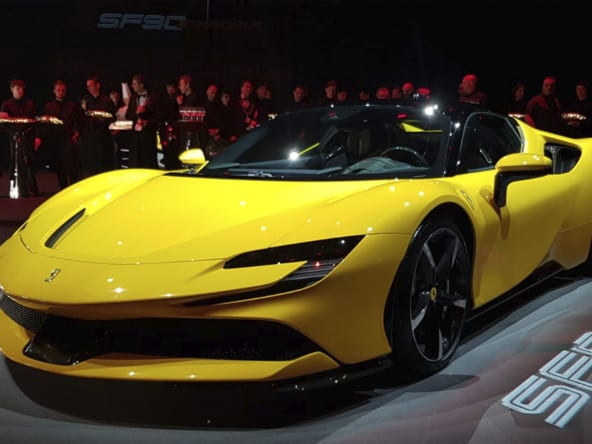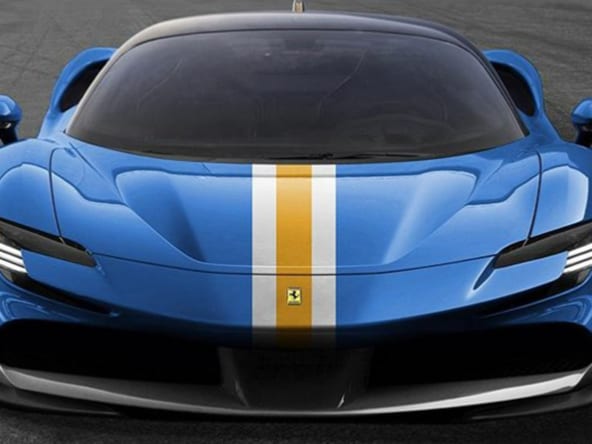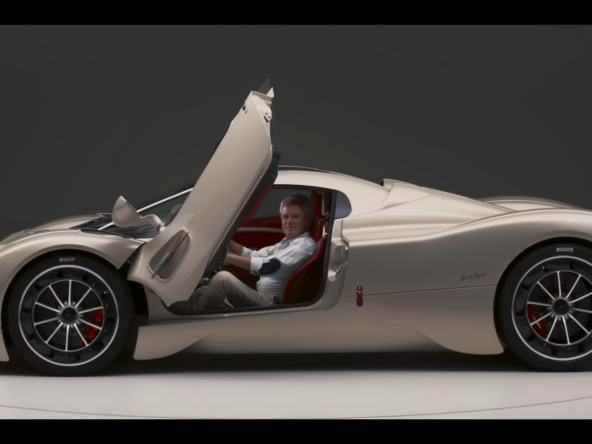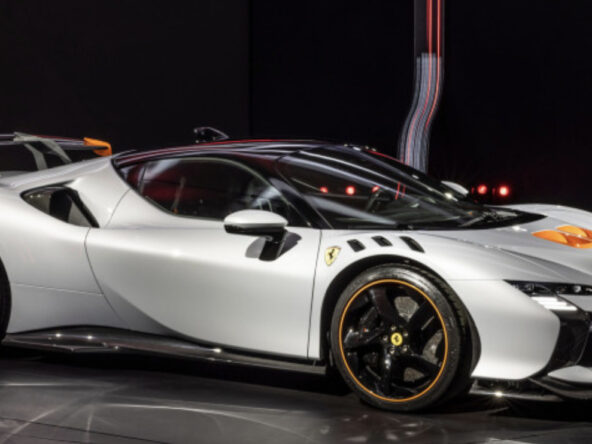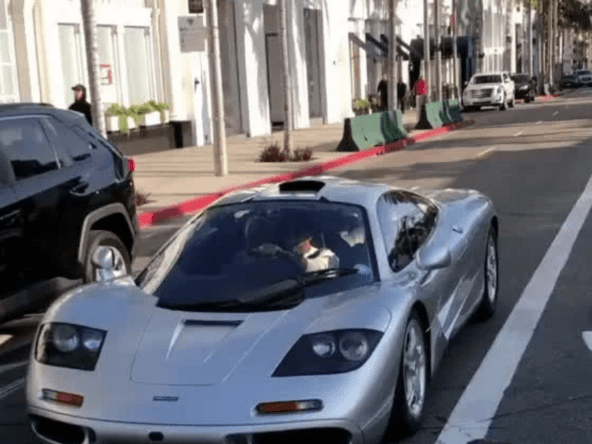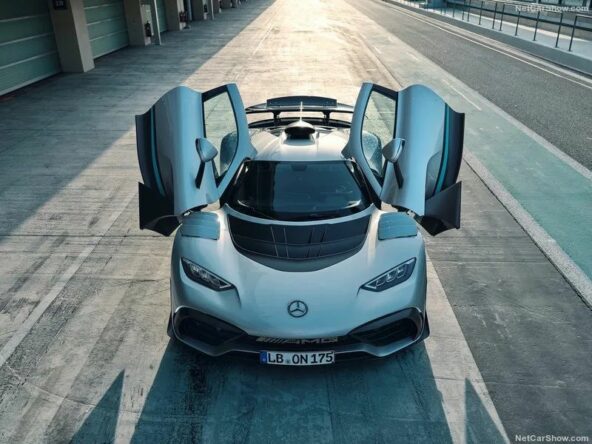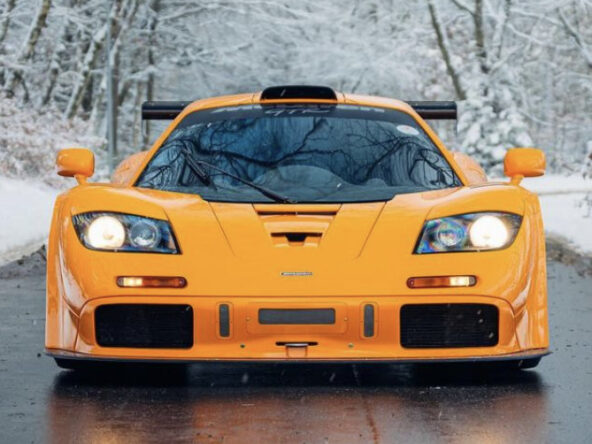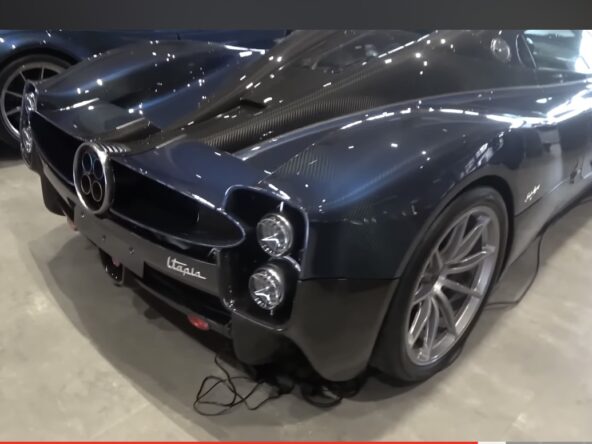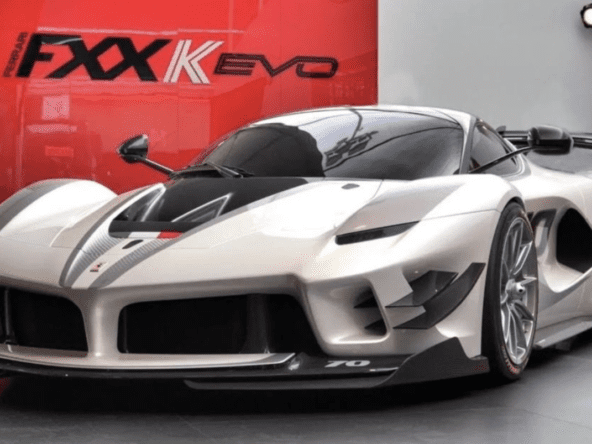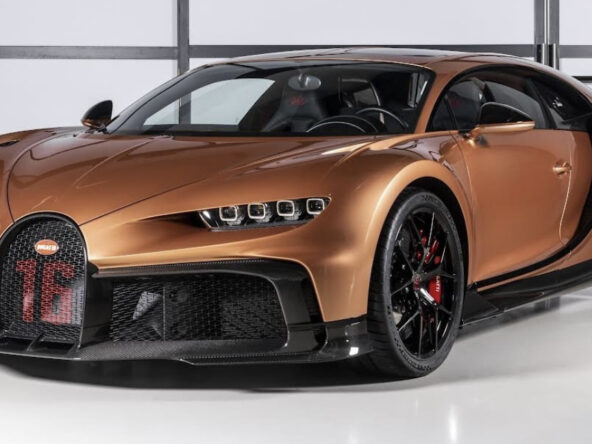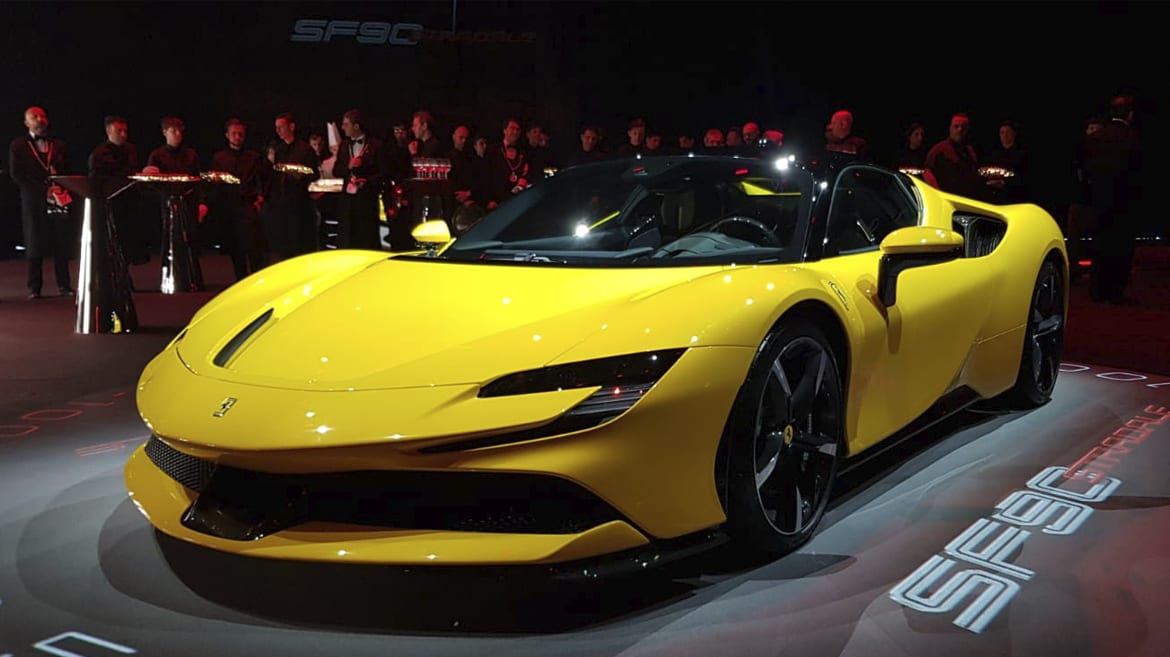Ferrari SF90 Stradale.Production not limited.
Overview
- 2019
Description
Ferrari SF90 Stradale is a mid-engine PHEV (Plug-in Hybrid Electric Vehicle) sports car produced by the Italian automobile manufacturer Ferrari. The car shares its name with the SF90 Formula One car with SF90 standing for the 90th anniversary of the Scuderia Ferrari racing team and “Stradale” meaning “made for the road”
The SF90 Stradale is a regular production sports car, with two seats and an uncapped production numbers.
CHARLES LECLERC DRIVES FAST FERRARI SF90 STRADALE IN MONACO
Battery and driving modes
The car has a 7.9 kWh lithium-ion battery for regenerative braking, giving the car 26 km (16 mi) of electric range. The car comes with four driving modes depending on road conditions. The modes are changed by the eManettino knob present on the steering wheel.
The eDrive mode runs the car only on the electric motors. The Hybrid mode runs the car on both the internal combustion engine and the electric motors and is the car’s default mode. In this mode, the car’s onboard computer (called control logic) also turns off the engine if the conditions are ideal in order to save fuel while allowing the driver to start the engine again. The Performance mode keeps the engine running in order to charge the batteries and keeps the car responsive in order for optimum performance. The Qualify mode uses the powertrain to its full potential.
The control logic system makes use of three primary areas: the high-voltage controls of the car (including the batteries), the RAC-e (Rotation Axis Control-electric) torque vectoring system, and the MGUK along with the engine and gearbox.
Powertrain
The SF90 Stradale is equipped with three electric motors, adding a combined output of 220 PS (162 kW; 217 bhp)[6] to a twin-turbocharged V8 engine rated at a power output of 780 PS (574 kW; 769 hp) at 7,500 rpm. The car is rated at a total output of 1,000 PS (735 kW; 986 hp) at 8,000 rpm and a maximum torque of 800 N⋅m (590 lb⋅ft) at 6,000 rpm.
The engine is an evolution of the unit found in the 488 Pista and the upcoming F8 Tributo models.[10] The engine’s capacity has been increased to 4.0 L (3,990 cc) and the bore has also been increased to 88 mm (3.46 in). The intake and exhaust of the engine have been completely modified. The cylinder heads of the engine are now narrower and the all-new central fuel injectors run at a pressure of 350 bar (5,100 psi). The assembly for the turbochargers is lower than that of the exhaust system and the engine sits 50 mm (2.0 in) lower in the chassis than the other mid-engine V8 models in order to maintain a lower centre of gravity. The engine utilises a smaller flywheels and an inconel exhaust manifold.
The front wheels are powered by two electric motors (one for each wheel), providing torque vectoring. They also function as the reversing gear, as the main transmission (eight-speed dual-clutch) does not have a reversing gear.
Transmission
The engine of the SF90 Stradale is mated to a new 8-speed dual-clutch transmission. The new transmission is 10 kg (22 lb) lighter and more compact than the existing 7-speed transmission used by the other offerings of the manufacturer partly due to the absence of a dedicated reverse gear since reversing is provided by the electric motors mounted on the front axle. The new transmission also has a 30% faster shift time (200 milliseconds).
Interior
A 16-inch curved display located behind the steering wheel displays various vital statistics of the car to the driver. The car also employs a new head-up display that would reconfigure itself according to the selected driving mode. The steering wheel is carried over from the 488 but now features multiple capacitive touch interfaces to control the various functions of the car. Other conventional levers and buttons are retained. The interior will also channel sound of the engine to the driver according to the manufacturer.
Handling
The SF90 Stradale employs eSSC (electric Side Slip Control) which controls the torque distribution to all four wheels of the car. The eSSC is combined with eTC (electric Tractional Control), a new brake-by-wire system which combines the traditional hydraulic braking system and electric motors to provide optimal regenerative braking and torque vectoring.
Chassis
The car’s all-new chassis combines aluminium and carbon fibre to improve structural rigidity and provide a suitable platform for the car’s hybrid system. The car has a total dry weight of 1,570 kg (3,461 lb) after combining the 270 kg (595 lb) weight of the electric system.
Performance
Ferrari states that the SF90 Stradale is capable of accelerating from a standstill to 100 km/h (62 mph) in 2.5 seconds, 0–200 km/h (124 mph) in 6.7 seconds and can attain a top speed of 340 km/h (211 mph).[13]
Design
The manufacturer claims that the SF90 Stradale can generate 390 kg (860 lb) of downforce at 250 km/h (155 mph) due to new findings in aero and thermal dynamics.
The main feature of the design is the twin-part rear wing which is an application of the DRS (Drag Reduction System) used in Formula One. A fixed element in the wing incorporates the rear light, the mobile parts of the wing (called “shut off Gurney” by the manufacturer) integrate into the body by using electric actuators in order to maximise downforce. The SF90 Stradale uses an evolution of Ferrari’s vortex generators mounted at the front of the car.
The car employs a cab-forward design in order to utilise the new aerodynamic parts of the car more effectively and in order to incorporate radiators or the cooling requirements of the hybrid system of the car. The design is a close collaboration between Ferrari Styling Centre and Ferrari engineers.
The rear-end of the car carries over many iconic Ferrari Styling elements such as the flying buttresses. The engine cover has been kept as low as possible in order to maximise airflow. According to the car’s lead designer, Flavio Manzoni, the car’s design lies in between that of a spaceship and of a race car. The rear side-profile harkens back to the 1960s 330 P3/4.
Assetto Fiorano
The Assetto Fiorano is a high-performance version of the SF90 Stradale. It uses racing-derived Multimatic shocks and lightweight carbon fibre parts embedded in the door panels and underbody. The Assetto Fiorano also employs a lightweight titanium exhaust system. These measures save 30 kg (66 lb) compared to the standard SF90 Stradale.
Price: 400000
Year: 2019
HP: 1000
KMH: Ferrari SF90 Stradale is a mid-engine PHEV (Plug-in Hybrid Electric Vehicle) sports car produced by the Italian automobile manufacturer Ferrari. The car shares its name with the SF90 Formula One car with SF90 standing for the 90th anniversary of the Scuderia Ferrari racing team and “Stradale” meaning “made for the road”
The SF90 Stradale is a regular production sports car, with two seats and an uncapped production numbers.
CHARLES LECLERC DRIVES FAST FERRARI SF90 STRADALE IN MONACO
Battery and driving modes
The car has a 7.9 kWh lithium-ion battery for regenerative braking, giving the car 26 km (16 mi) of electric range. The car comes with four driving modes depending on road conditions. The modes are changed by the eManettino knob present on the steering wheel.
The eDrive mode runs the car only on the electric motors. The Hybrid mode runs the car on both the internal combustion engine and the electric motors and is the car’s default mode. In this mode, the car’s onboard computer (called control logic) also turns off the engine if the conditions are ideal in order to save fuel while allowing the driver to start the engine again. The Performance mode keeps the engine running in order to charge the batteries and keeps the car responsive in order for optimum performance. The Qualify mode uses the powertrain to its full potential.
The control logic system makes use of three primary areas: the high-voltage controls of the car (including the batteries), the RAC-e (Rotation Axis Control-electric) torque vectoring system, and the MGUK along with the engine and gearbox.
Powertrain
The SF90 Stradale is equipped with three electric motors, adding a combined output of 220 PS (162 kW; 217 bhp)[6] to a twin-turbocharged V8 engine rated at a power output of 780 PS (574 kW; 769 hp) at 7,500 rpm. The car is rated at a total output of 1,000 PS (735 kW; 986 hp) at 8,000 rpm and a maximum torque of 800 N⋅m (590 lb⋅ft) at 6,000 rpm.
The engine is an evolution of the unit found in the 488 Pista and the upcoming F8 Tributo models.[10] The engine’s capacity has been increased to 4.0 L (3,990 cc) and the bore has also been increased to 88 mm (3.46 in). The intake and exhaust of the engine have been completely modified. The cylinder heads of the engine are now narrower and the all-new central fuel injectors run at a pressure of 350 bar (5,100 psi). The assembly for the turbochargers is lower than that of the exhaust system and the engine sits 50 mm (2.0 in) lower in the chassis than the other mid-engine V8 models in order to maintain a lower centre of gravity. The engine utilises a smaller flywheels and an inconel exhaust manifold.
The front wheels are powered by two electric motors (one for each wheel), providing torque vectoring. They also function as the reversing gear, as the main transmission (eight-speed dual-clutch) does not have a reversing gear.
Transmission
The engine of the SF90 Stradale is mated to a new 8-speed dual-clutch transmission. The new transmission is 10 kg (22 lb) lighter and more compact than the existing 7-speed transmission used by the other offerings of the manufacturer partly due to the absence of a dedicated reverse gear since reversing is provided by the electric motors mounted on the front axle. The new transmission also has a 30% faster shift time (200 milliseconds).
Interior
A 16-inch curved display located behind the steering wheel displays various vital statistics of the car to the driver. The car also employs a new head-up display that would reconfigure itself according to the selected driving mode. The steering wheel is carried over from the 488 but now features multiple capacitive touch interfaces to control the various functions of the car. Other conventional levers and buttons are retained. The interior will also channel sound of the engine to the driver according to the manufacturer.
Handling
The SF90 Stradale employs eSSC (electric Side Slip Control) which controls the torque distribution to all four wheels of the car. The eSSC is combined with eTC (electric Tractional Control), a new brake-by-wire system which combines the traditional hydraulic braking system and electric motors to provide optimal regenerative braking and torque vectoring.
Chassis
The car’s all-new chassis combines aluminium and carbon fibre to improve structural rigidity and provide a suitable platform for the car’s hybrid system. The car has a total dry weight of 1,570 kg (3,461 lb) after combining the 270 kg (595 lb) weight of the electric system.
Performance
Ferrari states that the SF90 Stradale is capable of accelerating from a standstill to 100 km/h (62 mph) in 2.5 seconds, 0–200 km/h (124 mph) in 6.7 seconds and can attain a top speed of 340 km/h (211 mph).[13]
Design
The manufacturer claims that the SF90 Stradale can generate 390 kg (860 lb) of downforce at 250 km/h (155 mph) due to new findings in aero and thermal dynamics.
The main feature of the design is the twin-part rear wing which is an application of the DRS (Drag Reduction System) used in Formula One. A fixed element in the wing incorporates the rear light, the mobile parts of the wing (called “shut off Gurney” by the manufacturer) integrate into the body by using electric actuators in order to maximise downforce. The SF90 Stradale uses an evolution of Ferrari’s vortex generators mounted at the front of the car.
The car employs a cab-forward design in order to utilise the new aerodynamic parts of the car more effectively and in order to incorporate radiators or the cooling requirements of the hybrid system of the car. The design is a close collaboration between Ferrari Styling Centre and Ferrari engineers.
The rear-end of the car carries over many iconic Ferrari Styling elements such as the flying buttresses. The engine cover has been kept as low as possible in order to maximise airflow. According to the car’s lead designer, Flavio Manzoni, the car’s design lies in between that of a spaceship and of a race car. The rear side-profile harkens back to the 1960s 330 P3/4.
Assetto Fiorano
The Assetto Fiorano is a high-performance version of the SF90 Stradale. It uses racing-derived Multimatic shocks and lightweight carbon fibre parts embedded in the door panels and underbody. The Assetto Fiorano also employs a lightweight titanium exhaust system. These measures save 30 kg (66 lb) compared to the standard SF90 Stradale.
Details
Updated on September 30, 2020 at 12:00 am- Price: €400,000
- Year Built: 2019

